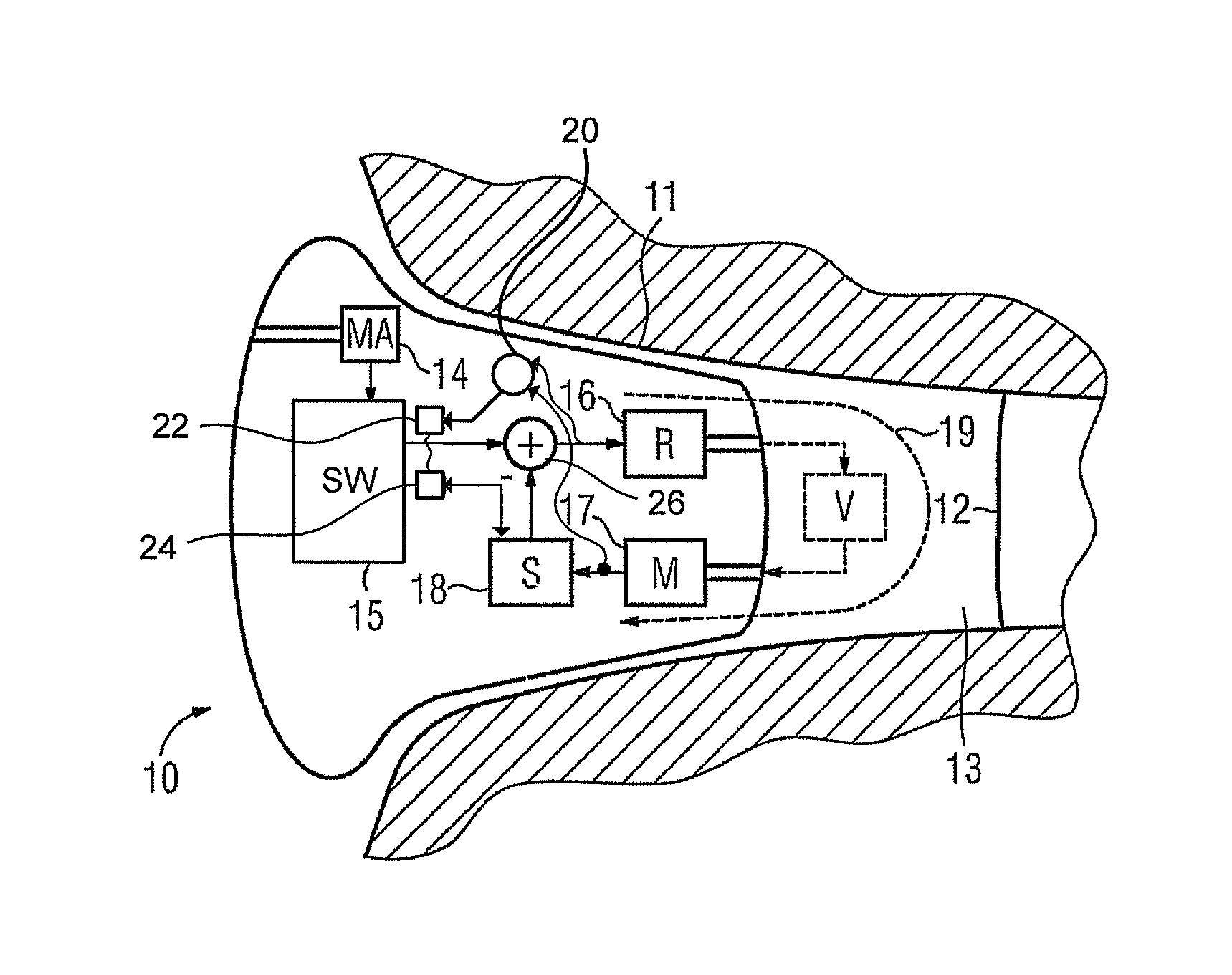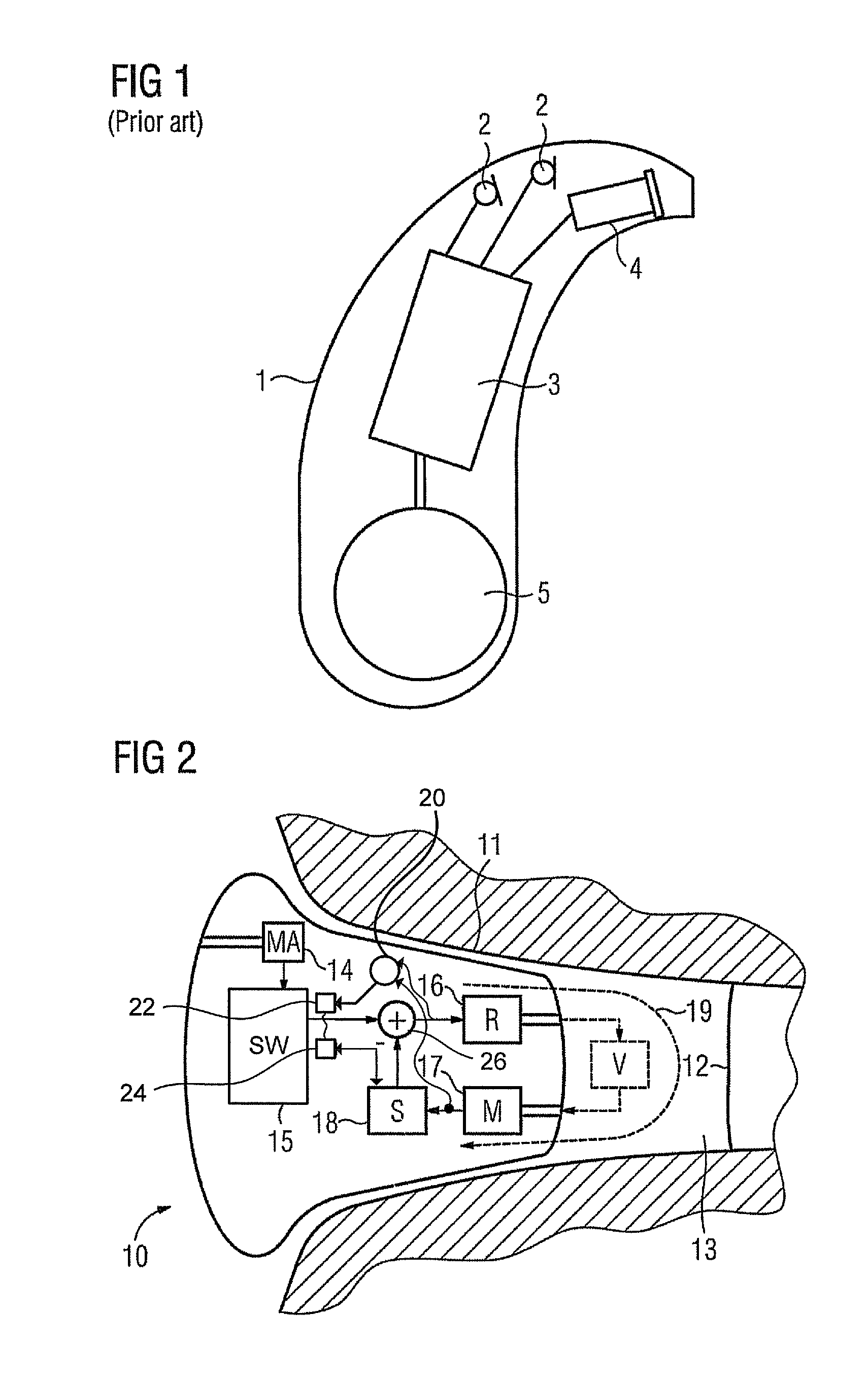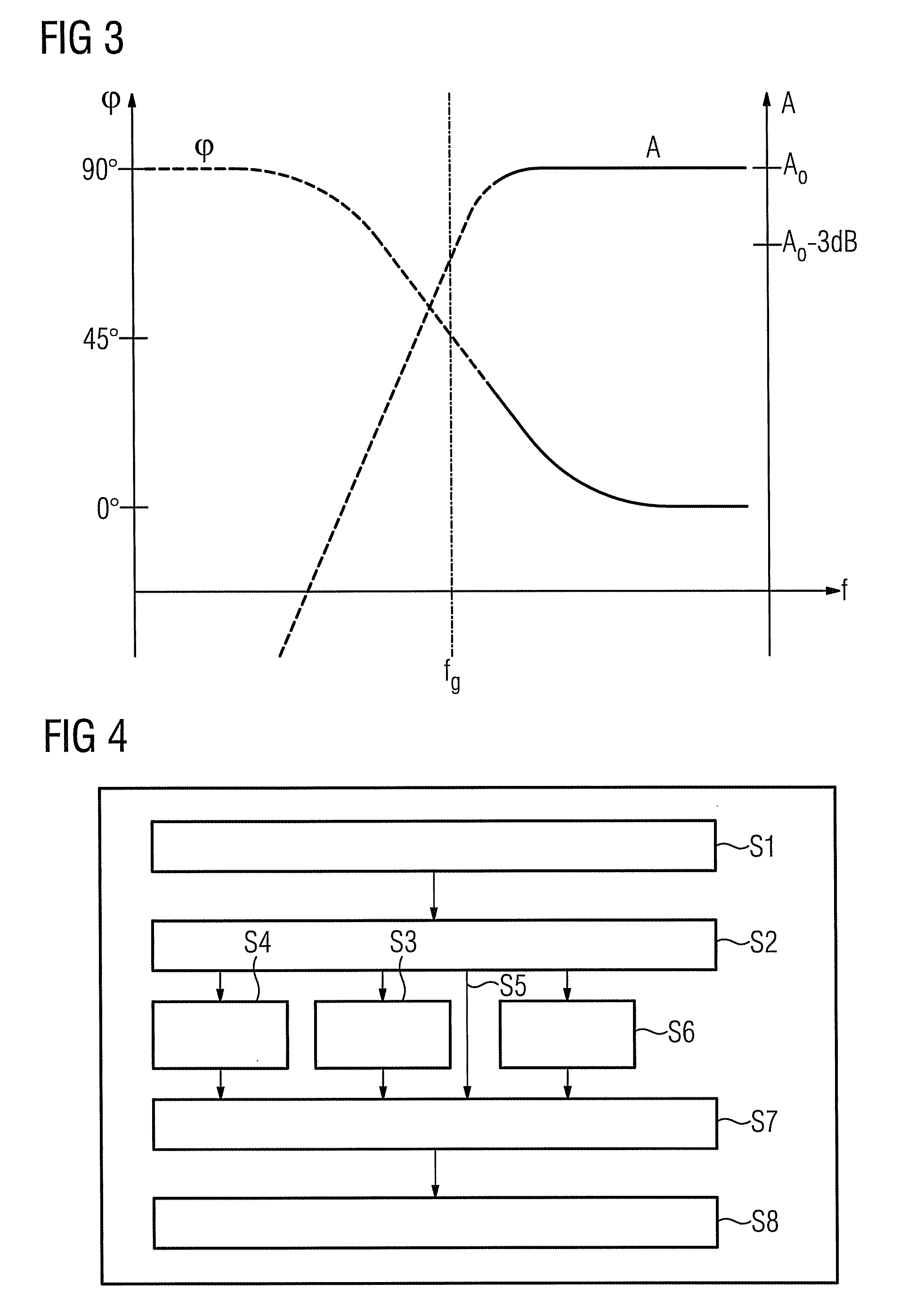Method for actively reducing occlusion comprising plausibility check and corresponding hearing apparatus
a hearing apparatus and plausibility check technology, applied in the field of active reduction of occlusion in the hearing apparatus, can solve the problems of occlusion effect, unnatural voice of wearer, and increased sound pressure, and achieve the effect of longer computing tim
- Summary
- Abstract
- Description
- Claims
- Application Information
AI Technical Summary
Benefits of technology
Problems solved by technology
Method used
Image
Examples
Embodiment Construction
[0022]The following exemplary embodiments described in more detail are preferred embodiments of the present invention.
[0023]FIG. 2 shows an ITE hearing aid 10 in cross-section, as is inserted in an auditory canal 11. The auditory canal 11 is terminated by an eardrum 12. A closed space 13 is produced between the eardrum 12 and the eardrum-side end of the ITE hearing aid 10. The isolation of this space leads to the known unpleasant occlusion effects.
[0024]The ITE hearing aid 10 has an outwardly directed microphone 14 to pick up ambient sound (cf. microphone 2 in FIG. 1). The microphone signal is passed to a signal processing unit 15 which processes and amplifies the signal in the conventional manner (cf. signal processing unit 3 in FIG. 1). The processed signal is supplied to a receiver 16 or 4 in the conventional manner and this converts the signal into a sound and emits it into the auditory canal space 13. The wearer's own voice produces an unnaturally high sound pressure in the aud...
PUM
 Login to View More
Login to View More Abstract
Description
Claims
Application Information
 Login to View More
Login to View More - R&D
- Intellectual Property
- Life Sciences
- Materials
- Tech Scout
- Unparalleled Data Quality
- Higher Quality Content
- 60% Fewer Hallucinations
Browse by: Latest US Patents, China's latest patents, Technical Efficacy Thesaurus, Application Domain, Technology Topic, Popular Technical Reports.
© 2025 PatSnap. All rights reserved.Legal|Privacy policy|Modern Slavery Act Transparency Statement|Sitemap|About US| Contact US: help@patsnap.com



